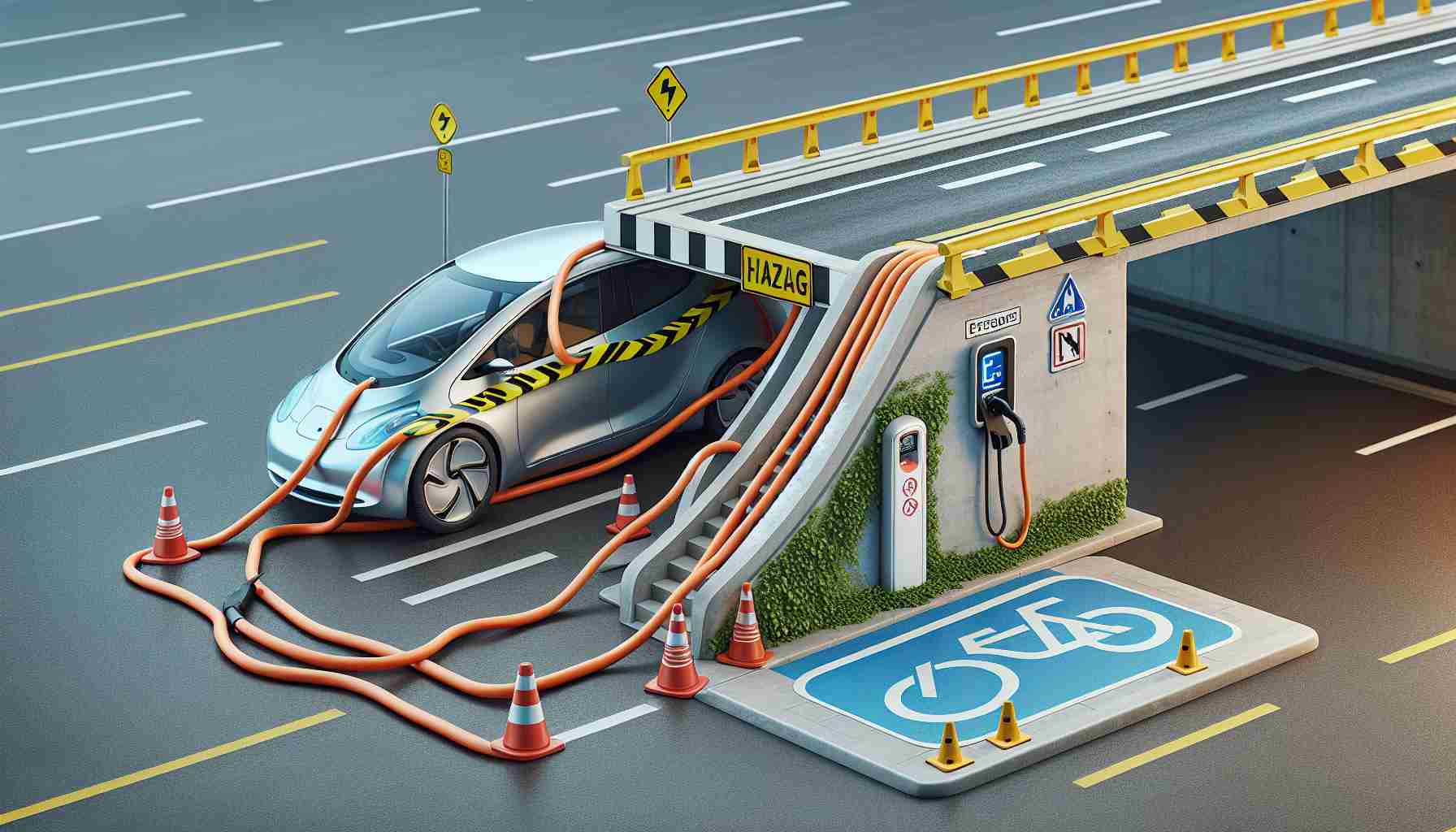
Innovative Charging Solutions for Electric Cars
As electric vehicles (EVs) gain traction, drivers are exploring various charging options, from public stations to home solutions. However, navigating the charging landscape, especially near residential areas, can often lead to unexpected challenges.
One notable concern is the presence of charging cables left on the ground, which could pose tripping hazards. This scenario is becoming common as more people adopt electric cars. In some Nordic countries, a unique solution has emerged: utilizing street lamps for charging. This method not only makes use of existing infrastructure but also minimizes the need for extensive installations.
While this approach is creative, it raises legal and safety issues, especially in urban environments. For instance, dangling cables from apartment windows is often prohibited, yet many local governments haven’t strictly enforced these regulations. The potential chaos of widespread cable display is concerning.
To mitigate tripping risks while charging, innovative companies like Ghost have introduced ultra-flat charging cables. These cables can handle high power levels and are designed to withstand foot and vehicle traffic without damage. Despite their convenience, the legalities around their use remain unclear, and changes to city laws could take time.
This remarkably designed cable could revolutionize charging in communal living situations, allowing for safe and unobtrusive EV charging in tight spaces. As the electric vehicle movement grows, so too must our strategies for effective and safe charging solutions.
Revolutionizing EV Charging: Innovative Solutions to Modern Challenges
As electric vehicles (EVs) continue to gain popularity, the need for efficient and safe charging solutions is becoming increasingly pressing. While traditional charging stations are common, new ideas are emerging to meet the evolving demands of EV drivers.
Features of Innovative Charging Solutions
1. Smart Charging Stations: Many cities are investing in smart charging infrastructure that can communicate with EVs to optimize charging schedules, manage energy consumption, and reduce peak load on the electrical grid. These systems often integrate renewable energy sources, further decreasing environmental impact.
2. Wireless Charging Technology: New advancements in wireless charging technology allow EVs to charge without physical connections, using electromagnetic fields. This reduces cable clutter and offers unparalleled convenience for users who can park on charging pads.
3. Solar-Powered Chargers: These chargers harness solar energy, providing an eco-friendly option for charging EVs, especially in remote areas where grid access may be limited. Integration of battery storage systems with solar chargers allows for charging even when sunlight isn’t available.
Pros and Cons of Various Charging Solutions
Pros:
– Convenience: Smart and wireless charging options reduce the hassle of plugging in cables.
– Sustainability: Solar-powered and energy-efficient options significantly lower carbon footprints.
– Space Efficiency: Utilizing existing infrastructure, like street lamps, reduces the need for new installations and conserves urban space.
Cons:
– High Initial Costs: Smart systems and wireless technology often come with a higher upfront investment.
– Regulatory Challenges: In many jurisdictions, there are unresolved legal frameworks for innovative charging methods, which can hinder widespread adoption.
– Compatibility Issues: Not all EVs are compatible with advanced charging technologies, limiting access for some drivers.
Current Trends in EV Charging
– Expansion of EV Charging Networks: Public and private sectors are rapidly expanding charging networks, making it easier for EV owners to find charging points. Companies like ChargePoint and Electrify America are leading the charge.
– Investment in Charging Infrastructure: Governments worldwide are allocating funds to enhance charging infrastructure, including faster charging options and more accessible locations.
– Increased Adoption of Mobile Apps: Many charging networks are using mobile apps to provide real-time information on charger availability, pricing, and payment options, enhancing the overall user experience.
Use Cases for Innovative Charging Solutions
– Urban Environments: In densely populated areas, utilizing street infrastructure for EV charging can significantly reduce space constraints.
– Workplaces: Companies are installing charging stations for employees, facilitating the transition to EV usage while supporting sustainability goals.
– Multi-Unit Dwellings: New charging solutions are being developed specifically for apartment buildings, where space is limited and communal charging solutions are necessary.
Limitations of Current Innovations
Despite the advancements in charging technologies, limitations still exist. The legal frameworks governing the use of innovative solutions, such as street lamp charging, continue to evolve. Additionally, widespread safety concerns about cable management and urban infrastructure compatibility remain unresolved.
Insights into the Future of EV Charging
As the electric vehicle market continues to grow, the demand for innovative and safe charging solutions will only increase. Collaboration between municipalities, technology companies, and auto manufacturers will drive the development of efficient systems that cater to diverse urban and suburban applications. Predictions indicate that by 2030, the majority of new vehicles sold will be electric, necessitating a massive upgrade to charging infrastructure.
For ongoing updates and insights into electric vehicle technologies, visit Energy.gov.



